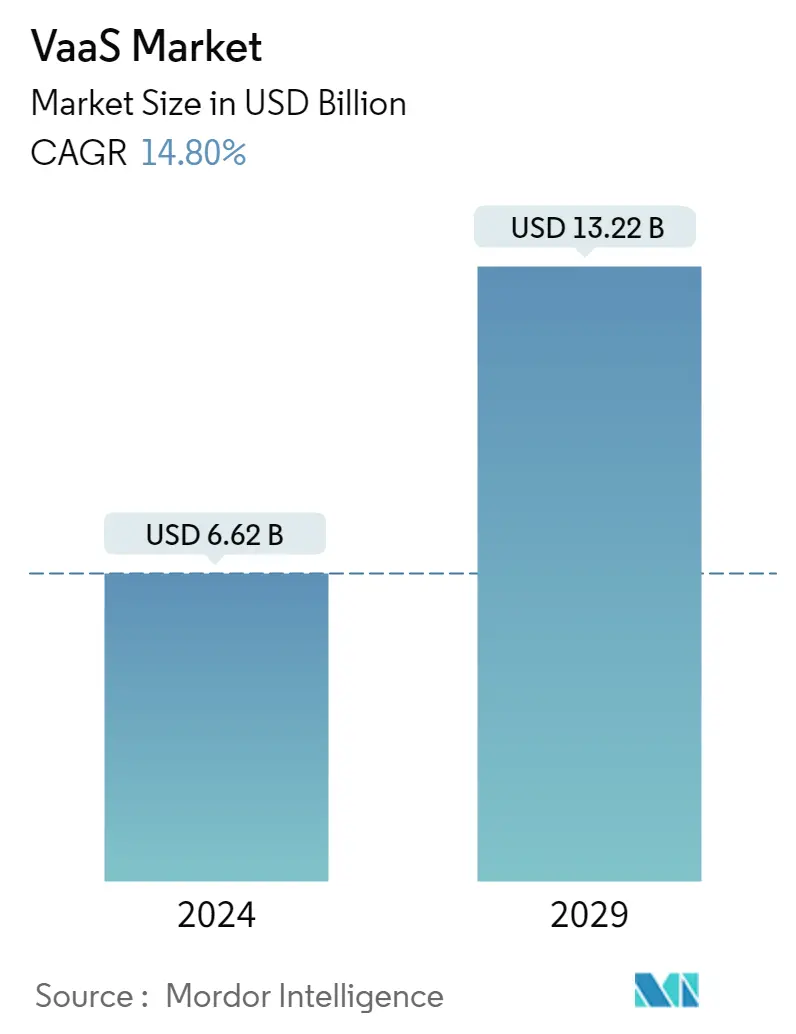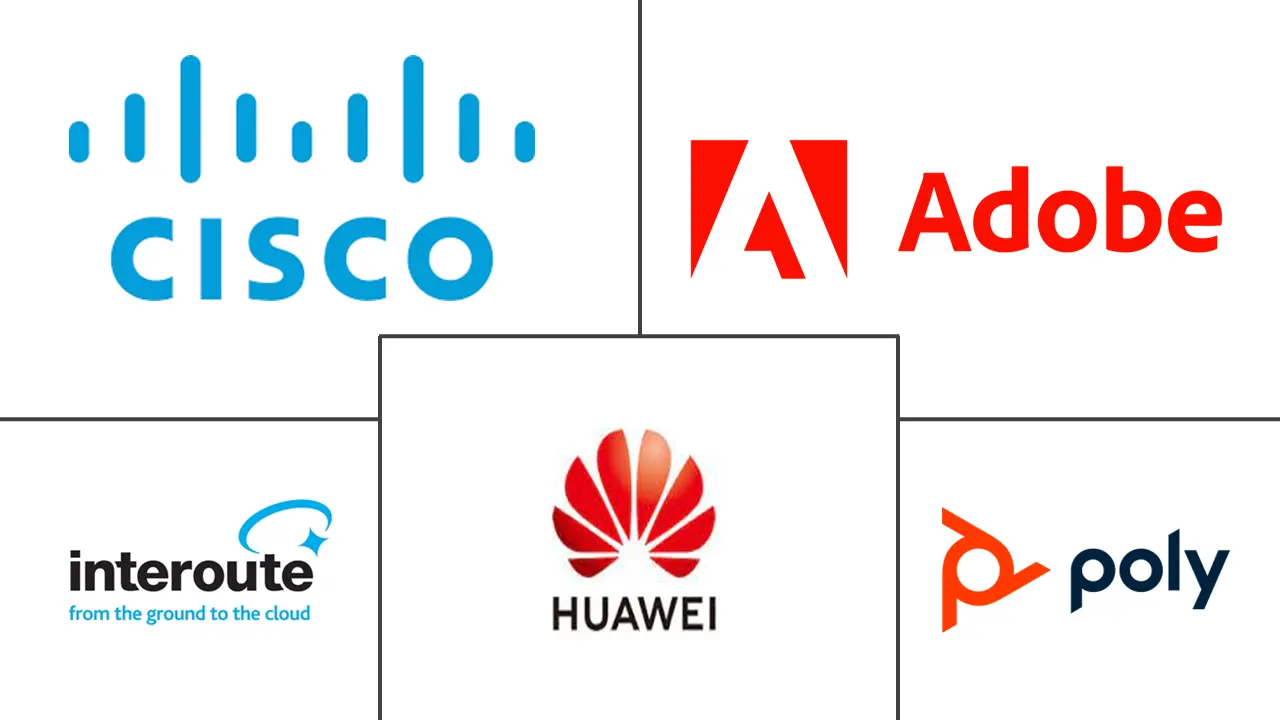Market Size of VaaS Industry

| Study Period | 2019 - 2029 |
| Market Size (2024) | USD 6.62 Billion |
| Market Size (2029) | USD 13.22 Billion |
| CAGR (2024 - 2029) | 14.80 % |
| Fastest Growing Market | Asia Pacific |
| Largest Market | North America |
Major Players
*Disclaimer: Major Players sorted in no particular order |
Need a report that reflects how COVID-19 has impacted this market and its growth?
Video-as-a-Service Market Analysis
The VaaS Market size is estimated at USD 6.62 billion in 2024, and is expected to reach USD 13.22 billion by 2029, growing at a CAGR of 14.80% during the forecast period (2024-2029).
Video as a Service (VaaS) is a cloud-based video communication service that allows users to conduct video conferences, video calls, and live video streaming over the Internet. VaaS providers offer the necessary infrastructure, software, and tools to enable businesses and individuals to communicate through video.
- Due to the high scalability, flexibility, and affordability provided by the cloud architecture, there is a discernible movement in demand away from on-premises video conferencing (VC) and collaboration solutions to cloud-based solutions. The popularity of cloud-based solutions has accelerated the demand for video as a service (VaaS). It saves time and travel expenses, as participants can collaborate from anywhere with an Internet connection. It also provides meeting transcription services, which can assist with product presentations, financial reviews, and other types of meetings.
- VaaS enhances productivity and efficiency, as participants can easily share and collaborate on documents and presentations in real time. Several video conferencing solutions vendors have implemented various business models to better serve their clients. Solution providers are putting their efforts into providing solutions specifically tailored to satisfy the needs of multiple enterprises. The use of cloud-based solutions is also increasing, as are the expenditures made to add new capabilities like immersive telepresence, voice and face recognition, HD audio and video, and artificial intelligence (AI). There will likely be more competition among the market players due to advancements in technology, innovations, and the entry of new VaaS solution providers, which would facilitate small and medium businesses to utilize affordable hybrid cloud-based collaboration and VC solutions.
- Further, VaaS can have various uses in the healthcare sector, such as remote healthcare services, telemedicine, video consultations, medical education, etc. With video conferencing, physicians and medical staff can interact with patients in real time, regardless of their physical location, which can be beneficial for patients who may have difficulty traveling. Additionally, medical staff can receive remote training and collaborate with other professionals in real time using video conferencing, which can improve the quality of care provided to patients.
- The market players are strategically deploying advanced VaaS to expand their presence and capture the market share. For instance, in October 2022, Pexip, an international provider of video technology, launched Pexip's Video Platform as a Service. With the service, the company hopes to empower big businesses to create innovative new products, incorporate video into workflows, and innovate. (VPaaS). Pexip's organizational structure, which currently comprises a new business unit with dedicated technical and commercial resources throughout the Americas, EMEA, and APAC, supports the company's focus on video innovation. Customer and citizen engagement, healthcare, and video-enabled extended reality are claimed to be the three major growth areas that this team is focusing on.
- Additionally, there are several uses of video as a service in the defense sector. Video surveillance is one such use, where cameras are used for security purposes. Additionally, video conferencing can be used by the government and defense sector for communication and collaboration. The defense sector can also use cloud services to store and access mission-critical data. Furthermore, innovative digital applications and services can be leveraged by the military and defense communication industry. The defense sector is influenced by various macroeconomic trends such as government spending, economic growth, and global economic conditions. The increasing spending of the various countries on military and defense would create an opportunity for the studied market to grow and develop new products to cater to a diverse range of needs. According to SIPRI, With USD 877 billion allocated to the military in 2022, the United States leads the ranking of countries with the largest military spending. That equated to approximately 40% of overall global military spending that year, which totaled USD 2.2 trillion. With an estimated USD 292 billion spent, China was the second-highest military spender, with Russia coming in third.
- On the other side, high acquisition and integration costs and data security and privacy concerns restrain the growth of the studied market. Several false alarms are triggered as a result of malfunctioning equipment and unfavorable weather or environmental conditions. Data security and privacy issues are anticipated to be a roadblock due to the service’s poor integration or lack of system synchronization.
